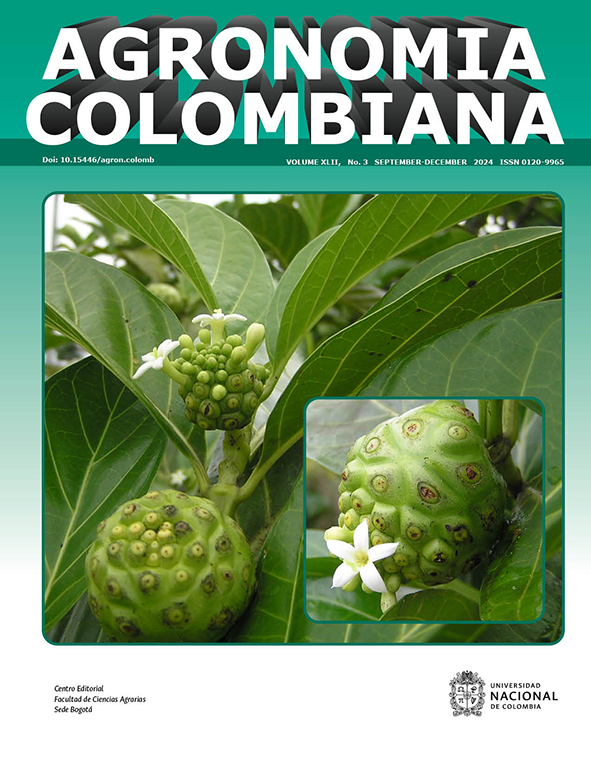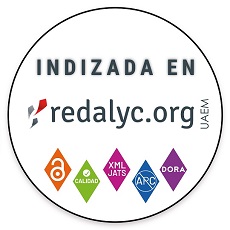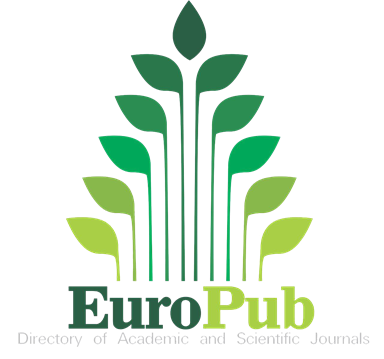Clustering of environments in response to the cultivation of black oat genotypes
Agrupación de ambientes en respuesta al cultivo de genotipos de avena negra
DOI:
https://doi.org/10.15446/agron.colomb.v42n3.114923Keywords:
Avena strigosa, cultivation environment, phenotype, correlation (en)Avena strigosa, ambiente de cultivo, fenotipo, correlación (es)
Downloads
The aim of this research was to study the genotype-environment interaction with a focus on decomposing the simple and complex parts of the interaction of black oat genotypes and clustering similar environments. The experiment was conducted at the Federal University of Santa Maria, Campus de Frederico Westphalen/RS (Brazil), in 2018, 2019, 2020, and 2021, using five lines and two cultivars of black oat in a randomized block experimental design. The traits evaluated were total dry mass and seed productivity. After verifying the presence of interaction between genotypes and environments, the interaction was decomposed into simple and complex parts. The UFSMFW 2-07 line stood out in terms of total dry mass and seed productivity. The total dry mass and seed productivity of black oat genotypes were highly influenced by environmental conditions over the four years of cultivation, highlighting the complexity of studying the genotype-environment interaction for more than one trait of interest at the same time.
El objetivo de este trabajo fue estudiar la interacción del genotipo y el ambiente con atención en la descomposición de la parte simple y compleja de la interacción de los genotipos de avena negra y la agrupación de ambientes similares. El experimentofue realizado en la Universidade Federal de Santa Maria, Campus de Frederico Westphalen/RS (Brasil), en los años 2018, 2019, 2020 y 2021, con 5 líneas y 2 cultivares de avena negra, en un diseño experimental de bloques al azar. Las características evaluadas fueron masa seca total y producción de semillas. Una vez verificada la presencia de interacción entre genotipos y ambientes, la interacción se descompuso en partes simples y complejas. La línea UFSMFW 2 07 se destacó por masa seca total y producción de semillas. La masa seca total y la producción de las semillas de los genotipos de avena negra estuvieron altamente influenciadas por las condiciones ambientales durante los cuatro años de cultivo, lo que muestra la complejidad de estudiar la interacción del genotipo y el medio ambiente para más de un rasgo de interés al mismo tiempo.
References
Allard, R. W. (1999). Principles of plant breeding (2nd ed.), John Wiley & Sons.
Alvares, C. A., Alcarde, C., Stape, J. L., Sentelhas, P. C., Moraes, J. L. G., & Sparovek, G. (2013). Köppen’s climate classification map for Brazil. Meteorologische Zeitschrift, 22(6), 711–728. https://doi.org/10.1127/0941-2948/2013/0507
Benin, G., Carvalho, F. I. C., Oliveira, A. C., Lorencetti, C., Vieira, E. A., Coimbra, J. L. M., Valério, I. P., Floss, E. L., Bertan, I., & Silva, G. O. (2005). Adaptabilidade e estabilidade em aveia em ambientes estratificados. Ciência Rural, 35(2), 295–302. https://doi.org/10.1590/S0103-84782005000200008
Cardoso, D. B. O., Silva-Júnior, E. G., Reis, M. C., Sousa, L. B., Falco, L. M. S., Mamede, M. C., Machado, B. Q. V., Paiva, T. S., Gundim, C. P., Alves, G. A., & Araújo, L. P. (2019). Colored fiber cotton in the Uberlândia region using artificial neural networks for yield assessment. Genetics and Molecular Research, 18(1), Article 18104. https://doi.org/10.4238/gmr18104
Cargnin, A., Souza, M. A., Carneiro, P. C. S., & Sofiatti, V. (2006). Interação entre genótipos e ambientes e implicações em ganhos com seleção em trigo. Pesquisa Agropecuária Brasileira, 41(6), 987–993. https://doi.org/10.1590/S0100-204X2006000600014
Costa, A. F., Leal, N. R., Ventura, J. A., Gonçalvez, L. S. A., Amaral Júnior, A. T., & Costa, H. (2015). Adaptability and stability of strawberry cultivars using a mixed model. Acta Scientiarum – Agronomy, 37(4), 435–440. https://doi.org/10.4025/actasciagron.v37i4.18251
Cruz, C. D., Carneiro, P. C. S., & Regazzi, A. J. (2014). Modelos biométricos aplicados ao melhoramento genético (5th ed.). Universidade Federal de Viçosa.
Cruz, C. D., & Castoldi, F. L. (1991). Simple and complex decomposition in parts of the genotypes×environments interaction. Revista Ceres, 38, 422–430.
Cruz, C. D., Regazzi, A. J., & Carneiro, P. C. S. (2012). Modelos biométricos aplicados ao melhoramento genético. Universidade Federal de Viçosa.
Cruz, C. D., Torres, R. A., & Vencovsky, R. (1989). An alternative approach to the stability analysis proposed by Silva and Barreto. Revista Brasileira de Genética, 12(3), 567–580. https://issuu.com/vencovsky/docs/vencovsky_roland_a35
Debiasi, H., Martins, J. D., & Missio, E. L. (2007). Produtividade de grãos e componentes do rendimento da aveia preta (Avena strigosa Schreb.) afetados pela densidade e velocidade de semeadura. Ciência Rural, 37(3), 649–655. https://doi.org/10.1590/S0103-84782007000300008
Eberhart, S. A., & Russell, W. A. (1966). Stability parameters for comparing varieties. Crop Science, 6(1), 36–40. https://doi.org/10.2135/cropsci1966.0011183X000600010011x
Finlay, K. W., & Wilkinson, G. N. (1963). The analysis of adaptation in a plant breeding programme. Australian Journal of Agricultural Research, 14(6), 742–754. https://doi.org/10.1071/AR9630742
Leite, J. G. D. B., Federizzi, L. C., & Bergamaschi, H. (2012). Mudanças climáticas e seus possíveis impactos aos sistemas agrícolas no Sul do Brasil. Revista Brasileira de Ciências Agrárias, 7(2), 337–343.
Nunes, G. H. S., Madeiros, A. E. S., Grangeiro, L. C., Santos, G. M., & Sales Júnior, R. (2006). Estabilidade fenotípica de híbridos de melão amarelo avaliados no Pólo Agroindustrial Mossoró-Assu. Pesquisa Agropecuária Brasileira, 41(9), 57–67. https://doi.org/10.1590/S0100-204X2006000900004
Nunes, G. H. S., Santos Júnior, H., Grangeiro, L. C., Bezerra Neto, F., Dias, C. T. S., & Dantas, M. S. M. (2011). Phenotypic stability of hybrids of Gália melon in Rio Grande do Norte state, Brazil. Anais da Academia Brasileira de Ciências, 83(4), 1421–1433. https://www.redalyc.org/articulo.oa?id=32721028020
Olivoto, T., & Lúcio, A. D. (2020). Metan: An R package for multienvironment trial analysis. Methods in Ecology and Evolution, 11(6), 783–789. https://doi.org/10.1111/2041-210X.13384
Olivoto, T., Lúcio, A. D., Silva, J. A. G., Sari, B. G., & Diel, M. I. (2019). Mean performance and stability in multi-environment trials II: Selection based on multiple traits. Agronomy Journal, 111(6), 2961–2969. https://doi.org/10.2134/agronj2019.03.0221
Oteros, J., García-Mozo, H., Botey, R., Mestre, A., & Galán, C. (2015). Variations in cereal crop phenology in Spain over the last twenty-six years (1986-2012). Climatic Change, 130, 545–558. https://doi.org/10.1007/s10584-015-1363-9
Pinto, M. F., Carvalho, G. R., Botelho, C. E., Gonçalves, F. M. A., Rezende, J. C., & Ferreira, A. D. (2012). Eficiência na seleção de progênies de cafeeiro avaliadas em Minas Gerais. Bragantia, 71(1), 1–7. https://doi.org/10.1590/S0006-87052012005000008
Plaisted, R. L., & Peterson, L. C. (1959). A technique for evaluating the ability of selections to yield consistently in different locations or seasons. American Potato Journal, 36, 381–385. https://doi.org/10.1007/BF02852735
R Core Team. (2020). R: A language and environment for statistical computing. Vienna: R Foundation for Statistical Computing. https://www.R-project.org
Santos, A., Ceccon, G., Teodoro, P. E., Correa, A. M., Alvarez, R. C. F., Silva, J. F., & Alves, V. B. (2016). Adaptability and stability of erect cowpea lines via REML/BLUP and GGE Biplot. Bragantia, 75(3), 299–306. https://doi.org/10.1590/1678-4499.280
Sharifi, P., Aminpanah, H., Erfani, R., Mohaddesi, A., & Abbasian, A. (2017). Evaluation of genotype × environment interaction in rice based on AMMI model in Iran. Rice Science, 24(3), 173–180. https://doi.org/10.1016/j.rsci.2017.02.001
Silva, R. R., Benin, G., Silva, G. O., Marchioro, V. S., Almeida, J. L., & Matei, G. (2011). Adaptabilidade e estabilidade de cultivares de trigo em diferentes épocas de semeadura, no Paraná. Pesquisa Agropecuária Brasileira, 46(11), 1439–1447. https://doi.org/10.1590/S0100-204X2011001100004
Sousa, L., Hamawaki, O. T., Nogueira, A. P. O., Batista, R. O., Oliveira, V. M., & Hamawaki, R. L. (2015). Evaluation of soybean lines and environmental stratification using the AMMI, GGE biplot, and factor analysis methods. Genetics and Molecular Research, 14(4), 12660–12674. https://doi.org/10.4238/2015.October.19.10
Souza, R. R., Toebe, M., Marchioro, V. S., Cargnelutti Filho, A., Mello, A. C., Manfio, G. L., Soldateli, F. J., Soares, F. S., Martins, V. M., & Jungues, D. L. (2021). Soybean grain yield in highland and lowland cultivation systems: A genotype by environment interaction approach. Annals of Applied Biology, 179(3), 302–318. https://doi.org/10.1111/aab.12709
Verma, M. M., Chahal, G. S., & Murty, B. R. (1978). Limitations of conventional regression analysis: a proposed modification. Theoretical and Applied Genetics, 53(2), 89–91. https://doi.org/10.1007/BF00274335
How to Cite
APA
ACM
ACS
ABNT
Chicago
Harvard
IEEE
MLA
Turabian
Vancouver
Download Citation
License
Copyright (c) 2024 Agronomía Colombiana

This work is licensed under a Creative Commons Attribution-NonCommercial-ShareAlike 4.0 International License.
© Centro Editorial de la Facultad de Ciencias Agrarias, Universidad Nacional de Colombia
Reproduction and quotation of material appearing in the journal is authorized provided the following are explicitly indicated: journal name, author(s) name, year, volume, issue and pages of the source. The ideas and observations recorded by the authors are their own and do not necessarily represent the views and policies of the Universidad Nacional de Colombia. Mention of products or commercial firms in the journal does not constitute a recommendation or endorsement on the part of the Universidad Nacional de Colombia; furthermore, the use of such products should comply with the product label recommendations.
The Creative Commons license used by Agronomia Colombiana journal is: Attribution - NonCommercial - ShareAlike (by-nc-sa)

Agronomia Colombiana by Centro Editorial of Facultad de Ciencias Agrarias, Universidad Nacional de Colombia is licensed under a Creative Commons Reconocimiento-NoComercial-CompartirIgual 4.0 Internacional License.
Creado a partir de la obra en http://revistas.unal.edu.co/index.php/agrocol/.




















